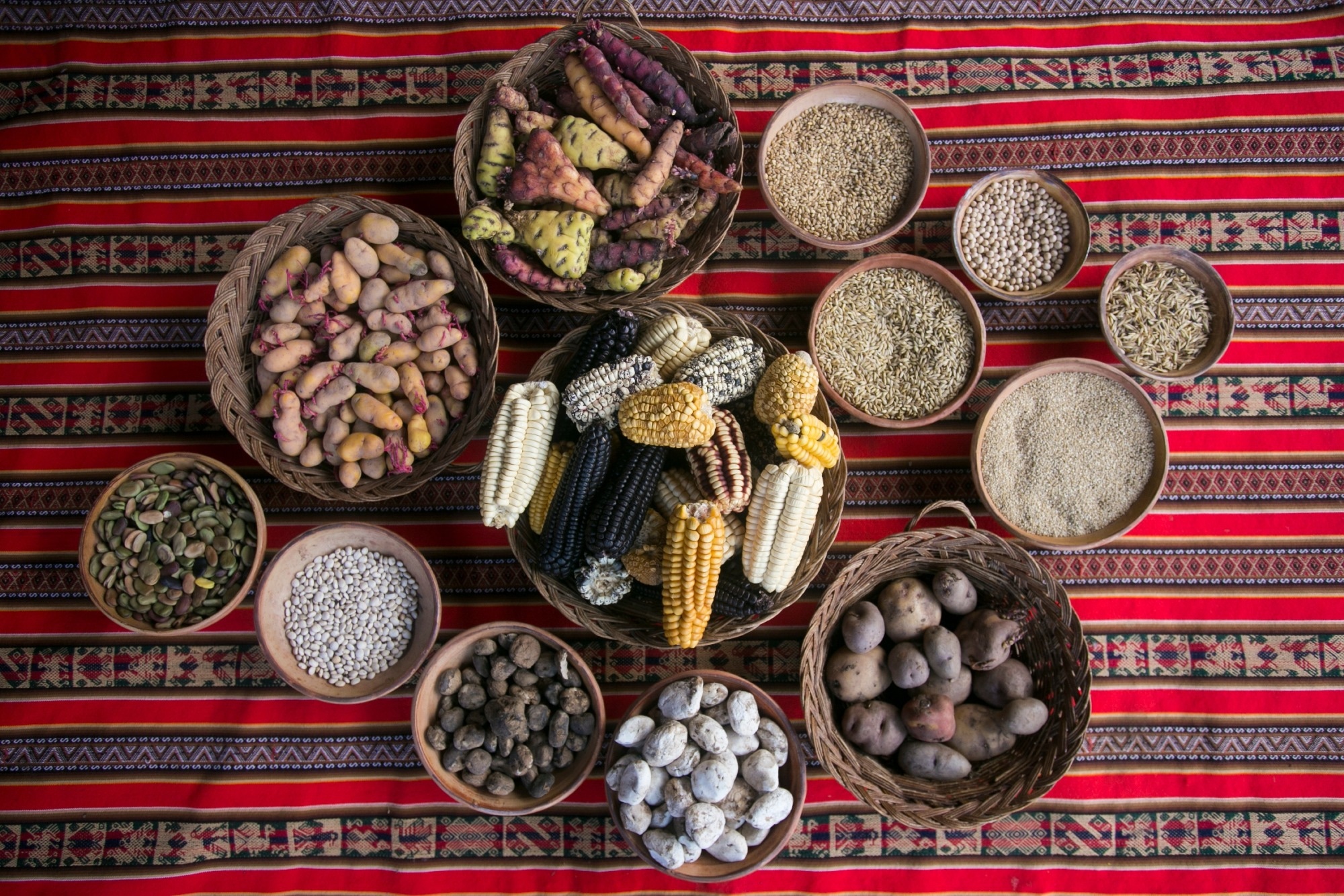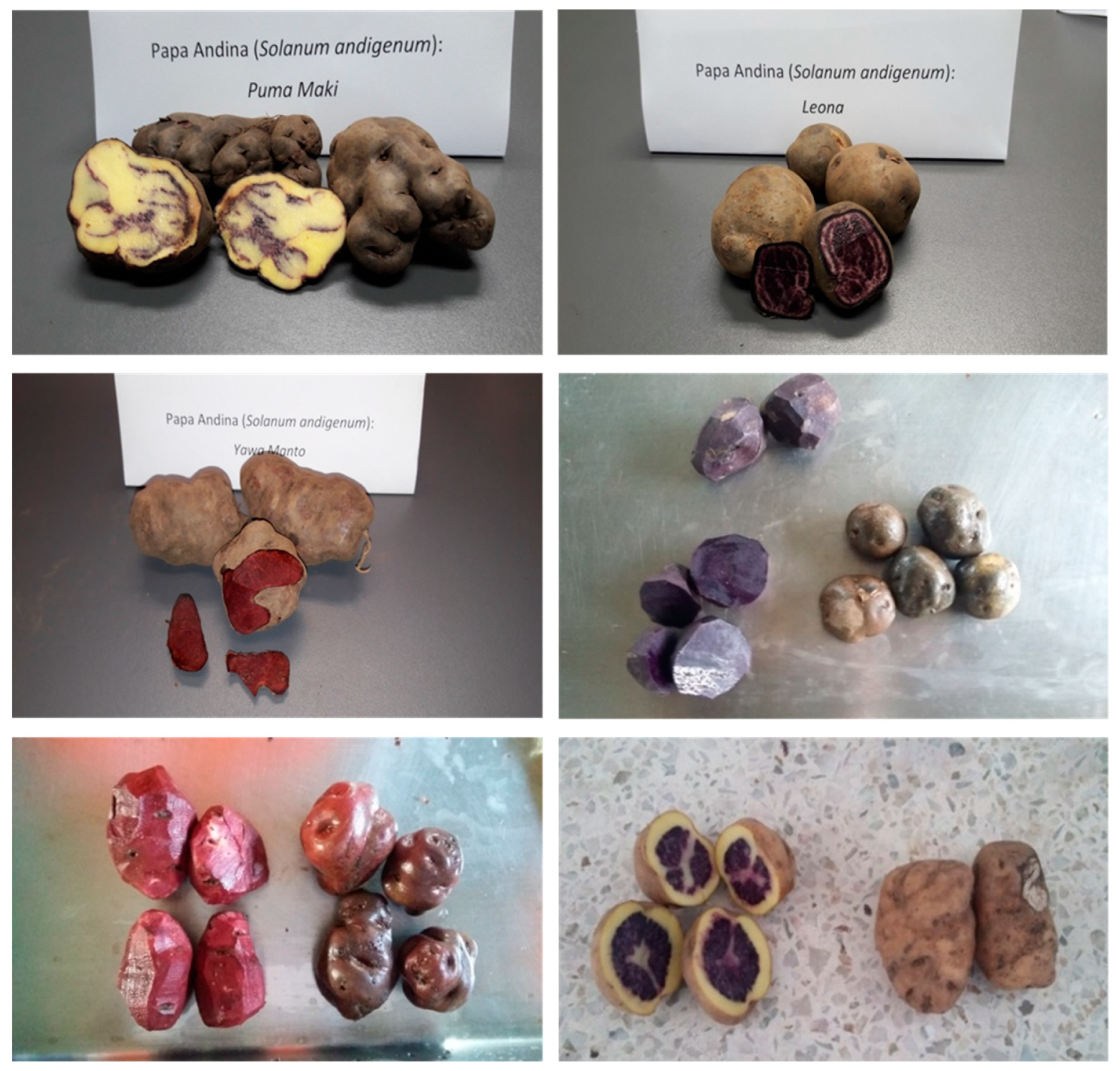Introduction
Core components of the Andean diet
Nutritional profile of Andean foods
Health benefits and modern applications
Cultural and historical context
Modern nutrition and global wellness trends
Challenges and considerations
Conclusions
References
Further reading
The Andean diet is a nutrient-rich, sustainable food tradition rooted in the highlands of South America, featuring diverse crops like quinoa, potatoes, and maca. It combines ancient agricultural wisdom with modern nutrition science to support health and preserve cultural heritage.
 Image Credit: Lecker Studio / Shutterstock.com
Image Credit: Lecker Studio / Shutterstock.com
Introduction
The Andean diet emphasizes the consumption of superfoods like quinoa, amaranth, and various potato varieties, which provide high-quality protein, potent antioxidants, and unique bioactive compounds, suggesting significant physiological benefits. Over the past several decades, health-conscious consumers have become increasingly interested in incorporating Andean dietary components, such as quinoa and maca, into their meals due to their benefits for human health. In addition to their nutrient density, several Andean staples are naturally gluten-free, making them suitable for individuals with celiac disease or gluten sensitivity.2
Core components of the Andean diet
The Andean highlands of west-central South America span across Peru, Bolivia, and Ecuador. This region is considered one of the world's earliest centers of plant domestication, producing crops that are genetically diverse and important for environmental sustainability.1 However, following European colonization, the Andean dietary pattern was marginalized, which led native grains including quinoa and amaranth to be replaced by imported crops like wheat and rice.2
The traditional Andean diet is characterized by a rich diversity of plant- and animal-based foods adapted to the region's challenging high-altitude environments.1,2 Grains and pseudocereals are staple foods of the Andean diet, the most notable of which include quinoa (Chenopodium quinoa), amaranth (Amaranthus caudatus), and cañihua (also spelled kaniwa; Chenopodium pallidicaule).2
The Andes is also home to thousands of potato landraces (varieties) across several domesticated Solanum species, as well as the vibrantly colored tuber oca (Oxalis tuberosa) and adaptogenic root maca (Lepidium meyenii).3,4,11
Legumes such as the Andean lupin bean (Lupinus mutabilis) serve as a primary source of high-quality protein.5 Native fruits like the goldenberry (Physalis peruviana), various chili peppers (aji), and maize (Zea mays) as a staple cereal are also key components of the Andean diet.1,2,4,5
Although predominantly plant-based, the Andean diet also includes protein from domesticated camelids like llamas and alpacas, as well as guinea pigs 11
Nutritional profile of Andean foods
Quinoa and amaranth contain 14-16% protein by dry weight and provide a complete profile of essential amino acids like lysine, which is deficient in most other global cereals.2 Comparatively, the protein content of the Andean lupin bean often exceeds 40%.5
Andean crops are potent sources of dietary fiber that support digestive health, as well as micronutrients, with quinoa and amaranth rich in iron, calcium, and magnesium.2 Native Andean potatoes, particularly colorful varieties, exhibit high levels of phenolic compounds and anthocyanins, both of which are associated with antioxidant and anti-inflammatory properties. Pigmented Andean potatoes tend to have markedly higher phenolic and anthocyanin levels than white or yellow-fleshed commercial types, especially in the skin.7

Varieties of Andean potatoes—Puma Makin, Leona (first line), Yawar Manto, Añil (second line), and Sangre de Toro, Qequrani (third line).7
Health benefits and modern applications
The high fiber and protein content in Andean foods has been found to improve glycemic control in both animal and human models. For example, a 2023 systematic review and meta-analysis of human intervention studies found that quinoa consumption significantly reduced total cholesterol, low-density lipoprotein (LDL)-cholesterol, and triglyceride levels, all of which are associated with improved cardiovascular health.8
Consistent with these findings, randomized controlled trials in adults consuming quinoa-based interventions report favorable changes in blood lipids and related cardiometabolic markers.8 In one trial conducted in patients with dysglycemia, researchers observed hypoglycemic benefits of Andean lupin intake as compared to soy.5
Moreover, a 12-week, randomized, double-blind, and placebo-controlled clinical trial in men with symptoms of late-onset hypogonadism found that maca supplementation significantly improved International Index of Erectile Function and International Prostate Symptom scores compared to the placebo. Participants received 1,000 mg capsules three times daily for 12 weeks, with assessments at weeks 4 and 12.10
Cultural and historical context
Archaeological evidence suggests that the success of civilizations like the Inca was due in part to sophisticated technologies, such as terrace farming, which transformed steep mountainsides into productive fields.1
Ancient Andean farmers deliberately cultivated fields at different elevations, using vertical diversity as a form of insurance against crop failure.11
When combined with the locals' deep understanding of microclimates, these innovations, along with the intrinsic resilience of Andean flora, allowed for the cultivation of an immense diversity of crops, which served as a risk-management strategy against pests, diseases, and unpredictable weather.2,6 FAO’s GIAHS documentation further highlights camellones and qochas water-management systems as emblematic of this long-standing adaptation to high-altitude environments.1
🥔🪨 Crushing Potatoes With The Ancient Andean Way in Peru | Gordon Ramsay: Uncharted
Modern nutrition and global wellness trends
Consumer prioritization of nutrient-dense, plant-based, and gluten-free options has popularized functional foods in health food markets worldwide.2,8 Similarly, maca powder has become a well-recognized supplement due to its adaptogenic properties and ability to support hormonal balance.3,10
Challenges and considerations
The growing popularity of Andean dietary foods has led to increased consumer demand, particularly for crops such as maca and quinoa. As a result, many food industries have relied on monoculture farming and, consequently, abandoned sustainable practices that are central to Andean culture.2
In addition to its socioeconomic impacts, large-scale clinical studies are needed to establish optimal dosages and confirm the health benefits of quinoa, maca, and other Andean dietary components.1,8,10
Conclusions
The Andean diet is a nutrient-dense and sustainable lifestyle for modern nutrition. Core food components, such as quinoa, maca, and diverse potato varieties, provide high-quality protein, fiber, and bioactive phytochemicals that support various aspects of human health.
A holistic approach that integrates ancient agricultural wisdom with contemporary nutritional science is crucial to ensure that the benefits of the Andean diet are equitably shared while simultaneously preserving the biocultural heritage of the Andean people.
References
- Food and Agriculture Organization of the United Nations. (2025). Globally Important Agricultural Heritage Systems (GIAHS): Andean Agriculture, Peru. https://www.fao.org/giahs/giahs-around-the-world/peru-andean-agriculture/en. Accessed on 15th September 2025.
- Navruz-Varli, S., & Sanlier, N. (2016). Nutritional and health benefits of quinoa (Chenopodium quinoa Willd.). Journal of Cereal Science 69, 371-376. DOI:10.1016/j.jcs.2016.05.004, https://www.sciencedirect.com/science/article/abs/pii/S0733521016300662
- Gonzales, G. F. (2012). Ethnobiology and Ethnopharmacology of Lepidium meyenii (Maca), a Plant from the Peruvian Highlands. Evidence-Based Complementary and Alternative Medicine, 2012, 1–10. DOI:10.1155/2012/193496, https://www.hindawi.com/journals/ecam/2012/193496/.
- International Potato Center. (n.d.). Andean Root and Tuber Crops. https://cipotato.org/roots-and-tubers/. Accessed on 15th September 2025.
- Fornasini, M., Castro, J., Villacrés, E., et al. (2012). Hypoglycemic effect of Lupinus mutabilis in healthy volunteers and subjects with dysglycemia. Nutrición Hospitalaria 27(2), 425-433. DOI:10.1590/S0212-16112012000200012, https://scielo.isciii.es/scielo.php?script=sci_arttext&pid=S0212-16112012000200012.
- Tito, R., Vasconcelos, H. L., & Feeley, K. J. (2017). Global climate change increases risk of crop yield losses and food insecurity in the tropical Andes. Global Change Biology 24(2), 592-602. DOI:10.1111/gcb.13959, https://onlinelibrary.wiley.com/doi/10.1111/gcb.13959.
- Bellumori, M., Chasquibol Silva, N., Vilca, L., et al. (2020). A Study on the Biodiversity of Pigmented Andean Potatoes: Nutritional Profile and Phenolic Composition. Molecules 25(14), 3169. DOI:10.3390/molecules25143169, https://www.mdpi.com/1420-3049/25/14/3169.
- Li, L., Lietz, G., & Seal, C. J. (2023). Effects of Quinoa Intake on Markers of Cardiovascular Risk: A Systematic Literature Review and Meta-Analysis. Food Reviews International 40(1), 1–19. DOI:10.1080/87559129.2022.2148689, https://www.tandfonline.com/doi/full/10.1080/87559129.2022.2148689.
- Kaur, N., Kaur, S., Agarwal, A., et al. (2024). Amaranthus crop for food security and sustainable food systems. Planta 260(3), 72. DOI:10.1007/s00425-024-04490-3, https://link.springer.com/article/10.1007/s00425-024-04490-3.
- Shin, D., Jeon, S. H., Piao, J., et al. (2023). Efficacy and Safety of Maca (Lepidium meyenii) in Patients with Symptoms of Late-Onset Hypogonadism: A Randomized, Double-Blind, Placebo-Controlled Clinical Trial. The World Journal of Men's Health 41(3), 692-701. DOI:10.5534/wjmh.220112, https://wjmh.org/DOIx.php?id=10.5534/wjmh.220112.
- National Research Council. (1989). Lost crops of the Incas: Little-known plants of the Andes with promise for worldwide cultivation. National Academies Press. DOI:10.17226/1398, https://nap.nationalacademies.org/catalog/1398/lost-crops-of-the-incas-little-known-plants-of-the-andes-with-promise-for-worldwide-cultivation.
Further Reading
Last Updated: Sep 17, 2025